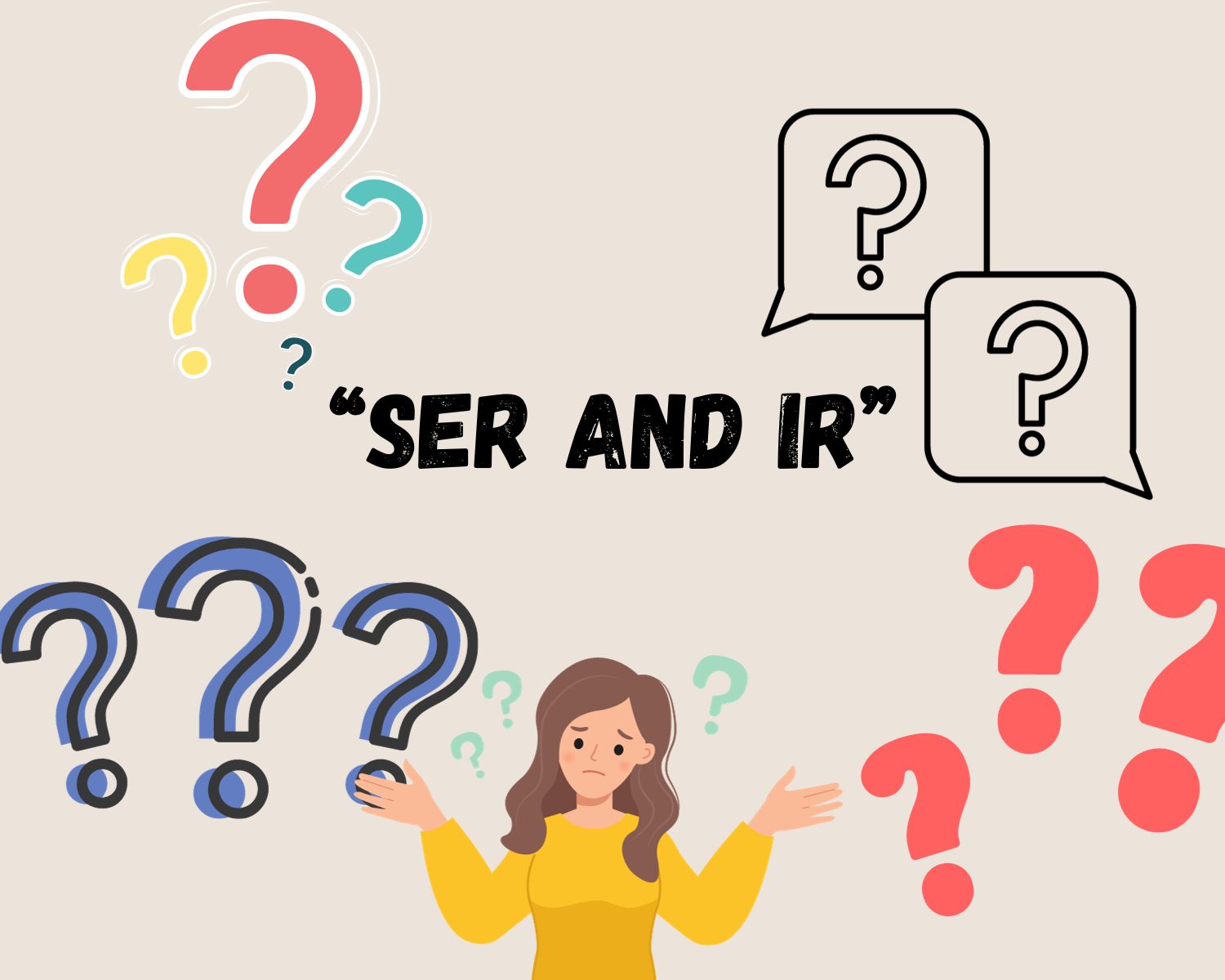Home>Language and Grammar>The Difference Between ‘Tengas’ And ‘Tienes’ In Spanish


Language and Grammar
The Difference Between ‘Tengas’ And ‘Tienes’ In Spanish
Modified: March 20, 2024
Learn the distinction between 'tengas' and 'tienes' in Spanish with our comprehensive guide. Improve your language and grammar skills today! Discover more.
(Many of the links in this article redirect to a specific reviewed product. Your purchase of these products through affiliate links helps to generate commission for Regretless.com, at no extra cost. Learn more)
Table of Contents
Introduction
Understanding the nuances of language is a captivating journey that unveils the intricate tapestry of human communication. In the realm of Spanish, two words, 'tengas' and 'tienes', often spark curiosity and contemplation among language enthusiasts. These two terms, while seemingly similar, possess distinct characteristics that significantly impact their usage and implications in conversations. Delving into the differences between 'tengas' and 'tienes' not only enriches our understanding of the Spanish language but also provides valuable insights into the cultural and contextual aspects of communication.
As we embark on this linguistic exploration, we will unravel the unique attributes of 'tengas' and 'tienes', shedding light on their conjugation, usage, and contextual relevance. By navigating through concrete examples and dissecting the subtle variations in their applications, we will gain a comprehensive understanding of how these words function within the rich tapestry of the Spanish language. Join me as we embark on a captivating journey through the realms of 'tengas' and 'tienes', unraveling their distinct identities and unveiling the vibrant hues they contribute to the linguistic landscape.
Definition of 'Tengas' and 'Tienes'
In the Spanish language, 'tengas' and 'tienes' are two distinct forms of the verb "tener," which means "to have." Understanding the subtle disparities between these two forms is essential for grasping their precise usage in different contexts.
'Tengas' is the present subjunctive form of the verb "tener." The subjunctive mood is employed to convey desires, doubts, hypothetical situations, and uncertainties. As such, 'tengas' is utilized when expressing wishes, requests, or recommendations. It is crucial to note that the subjunctive mood often occurs in subordinate clauses following specific triggers, such as verbs of influence, emotion, doubt, or impersonal expressions.
On the other hand, 'tienes' is the present indicative form of the verb "tener." The indicative mood is employed to convey factual information, certainty, and real events. 'Tienes' is used when stating concrete possession, describing habitual actions, or providing straightforward information about ownership or attributes.
The distinction between 'tengas' and 'tienes' lies in their mood and the nuances of certainty or uncertainty they convey. While 'tengas' delves into hypothetical or subjective realms, 'tienes' pertains to concrete facts and certainties. This contrast in mood and certainty is pivotal in determining the appropriate usage of 'tengas' and 'tienes' in diverse communicative scenarios.
As we delve deeper into the conjugation and usage of 'tengas' and 'tienes', we will unravel the intricate layers of these verbs, unveiling their distinct roles in sculpting the fabric of Spanish communication.
Conjugation and Usage of 'Tengas'
The conjugation of 'tengas' is rooted in the present subjunctive form of the verb 'tener.' This form is intricately woven into the tapestry of Spanish communication, adding layers of nuance and complexity to expressions of desires, uncertainties, and recommendations. To conjugate 'tengas' in the present subjunctive, the root 'teng-' is combined with specific endings to match the subject of the sentence. For example, in the first person singular, 'I have,' the conjugated form is 'tenga.' Similarly, in the second person singular, 'you have,' it becomes 'tengas.'
The usage of 'tengas' extends to various contexts where uncertainties, desires, or recommendations are articulated. When expressing wishes or desires, such as "I hope you have a great day," the subjunctive form 'tengas' is employed: "Espero que tengas un gran día." Here, the uncertainty of the future outcome is encapsulated in the subjunctive mood, emphasizing the subjective nature of the wish.
Furthermore, 'tengas' is utilized in requests or recommendations, infusing the communication with a sense of politeness and deference. For instance, when making a polite request, such as "I suggest you have patience," the subjunctive form 'tengas' is employed: "Te sugiero que tengas paciencia." This usage conveys the speaker's respectful recommendation while acknowledging the subjective nature of the advice.
In essence, 'tengas' serves as a linguistic gateway to express hopes, uncertainties, and recommendations, adding depth and emotional resonance to interpersonal communication. Its presence in the subjunctive mood enriches the Spanish language with the ability to articulate nuanced sentiments and convey subtle shades of meaning, underscoring the intricate interplay between language, emotion, and human connection.
As we unravel the intricacies of 'tengas,' we gain a profound appreciation for its role in shaping the emotional landscape of Spanish discourse, elevating expressions of desires, uncertainties, and recommendations to an art form that transcends mere communication, delving into the depths of human expression.
Conjugation and Usage of 'Tienes'
The conjugation of 'tienes' delves into the realm of the present indicative form of the verb 'tener,' encapsulating the essence of factual information, certainty, and concrete possession within the fabric of Spanish communication. When conjugating 'tienes' in the present indicative, the root 'tien-' is combined with specific endings to match the subject of the sentence. For instance, in the first person singular, 'I have,' the conjugated form is 'tengo.' Similarly, in the second person singular, 'you have,' it becomes 'tienes.'
The usage of 'tienes' spans across diverse communicative contexts, reflecting its role in articulating possession, habitual actions, and concrete attributes. When expressing possession in a straightforward manner, the indicative form 'tienes' is employed, elucidating the factual ownership of an object or attribute. For example, in stating 'you have a book,' the indicative form 'tienes' is utilized: 'Tienes un libro.' This usage conveys a clear and unequivocal statement of possession, grounding the communication in certainty and factual information.
Furthermore, 'tienes' is employed to describe habitual actions or attributes that are inherent to an individual. For instance, when expressing habitual possession or attributes, such as 'you have a good memory,' the indicative form 'tienes' is utilized: 'Tienes buena memoria.' This usage conveys the enduring and habitual nature of the possession or attribute, anchoring the communication in the realm of factual and recurrent experiences.
In essence, 'tienes' serves as a linguistic beacon illuminating the landscape of Spanish communication with clarity, certainty, and factual precision. Its presence in the indicative mood empowers speakers to convey possession, habitual actions, and concrete attributes with unwavering certainty, underscoring the role of language in articulating the tangible facets of human experience.
As we unravel the intricate layers of 'tienes,' we gain a profound appreciation for its role in sculpting the communicative terrain, infusing expressions of possession, habitual actions, and concrete attributes with a palpable sense of certainty and factual precision, thereby enriching the fabric of Spanish discourse with its unwavering presence.
Examples of 'Tengas' and 'Tienes' in Context
In the rich tapestry of Spanish communication, the distinct nuances of 'tengas' and 'tienes' manifest in a myriad of contexts, each imbued with its own unique shades of meaning. Let's delve into concrete examples that illuminate the contextual relevance of these verbs, unveiling their subtle yet impactful roles in shaping interpersonal interactions.
Examples of 'Tengas' in Context
-
Expressing Wishes and Desires:
- Espero que tengas un excelente viaje. (I hope you have an excellent trip.)
- Deseo que tengas éxito en tu nueva empresa. (I wish you success in your new job.)
These examples showcase the utilization of 'tengas' in articulating hopes and wishes, encapsulating the subjective and uncertain nature of the desired outcomes.
-
Making Recommendations:
- Te sugiero que tengas paciencia en esta situación. (I suggest you have patience in this situation.)
- Es importante que tengas confianza en ti mismo. (It's important that you have confidence in yourself.)
Here, 'tengas' is employed to convey recommendations and suggestions, infusing the communication with a sense of politeness and deference while acknowledging the subjective nature of the advice.
Examples of 'Tienes' in Context
-
Stating Possession:
- Tienes un perro muy cariñoso. (You have a very affectionate dog.)
- Él tiene una hermosa casa en la playa. (He has a beautiful house on the beach.)
These examples illustrate the straightforward usage of 'tienes' to convey possession, grounding the communication in certainty and factual information about ownership.
-
Describing Habitual Actions:
- Tienes una sonrisa contagiosa. (You have a contagious smile.)
- Ella tiene un horario muy ocupado. (She has a very busy schedule.)
In these instances, 'tienes' is employed to describe habitual attributes and actions, emphasizing the enduring and recurrent nature of the possessed attribute or action.
Through these examples, the distinct roles of 'tengas' and 'tienes' in expressing hopes, uncertainties, recommendations, possession, and habitual actions come to life, underscoring their profound impact on the fabric of Spanish communication. These verbs, with their subtle nuances and contextual relevance, enrich the linguistic landscape, elevating expressions to an art form that transcends mere communication, delving into the depths of human expression.
Key Differences Between 'Tengas' and 'Tienes'
The key differences between 'tengas' and 'tienes' lie in their mood, certainty, and the nuanced shades of meaning they impart to Spanish communication. 'Tengas,' as the present subjunctive form of the verb 'tener,' delves into hypothetical, subjective, and uncertain realms. It is intricately woven into expressions of wishes, desires, recommendations, and uncertainties, encapsulating the emotional landscape of human interactions. On the other hand, 'tienes,' as the present indicative form of 'tener,' embodies factual information, certainty, and concrete possession, grounding communicative expressions in the realm of tangible experiences and habitual actions.
The fundamental distinction between 'tengas' and 'tienes' is rooted in their mood. 'Tengas' resides in the subjunctive mood, which is employed to convey desires, doubts, hypothetical situations, and uncertainties. This imbues 'tengas' with a sense of subjectivity and emotional resonance, allowing it to articulate nuanced sentiments and recommendations with a touch of deference and politeness. In contrast, 'tienes' thrives in the indicative mood, serving as a conduit for factual information, certainty, and habitual actions. Its usage conveys concrete possession, habitual attributes, and unequivocal statements, anchoring the communication in the realm of certainty and tangible experiences.
Furthermore, the nuanced shades of meaning embedded within 'tengas' and 'tienes' extend to their contextual relevance. 'Tengas' thrives in articulating hopes, uncertainties, recommendations, and desires, infusing the communication with emotional depth and subjective nuances. It delicately navigates the landscape of human emotions, elevating expressions to an art form that transcends mere communication. Conversely, 'tienes' flourishes in conveying possession, habitual actions, and concrete attributes, grounding the communication in the realm of tangible experiences and factual precision. Its presence empowers speakers to articulate possession and habitual actions with unwavering certainty, enriching the fabric of Spanish discourse with its palpable sense of clarity and factual precision.
In essence, the key differences between 'tengas' and 'tienes' encapsulate the intricate interplay between mood, certainty, and contextual relevance, underscoring their profound impact on the emotional and factual dimensions of Spanish communication. These subtle yet impactful disparities enrich the linguistic landscape, elevating expressions to an art form that resonates with the depths of human expression and experience.
Conclusion
In navigating the linguistic terrain of Spanish, the distinction between 'tengas' and 'tienes' unveils a captivating tapestry of emotional resonance and factual precision. The present subjunctive form 'tengas' delicately navigates the landscape of human desires, uncertainties, and recommendations, infusing the communication with subjective nuances and emotional depth. It serves as a linguistic vessel for articulating hopes, wishes, and polite recommendations, elevating interpersonal interactions to an art form that transcends mere communication.
On the other hand, the present indicative form 'tienes' stands as a beacon of factual information, certainty, and concrete possession within the fabric of Spanish discourse. It empowers speakers to convey possession, habitual actions, and concrete attributes with unwavering certainty, grounding the communication in the realm of tangible experiences and factual precision.
The subtle yet impactful disparities between 'tengas' and 'tienes' enrich the linguistic landscape, elevating expressions to an art form that resonates with the depths of human expression and experience. As language enthusiasts delve into the intricacies of Spanish communication, the distinct roles of 'tengas' and 'tienes' serve as a testament to the profound interplay between mood, certainty, and contextual relevance within the realm of language.
Ultimately, the exploration of 'tengas' and 'tienes' transcends the boundaries of grammar and conjugation, delving into the essence of human emotion, certainty, and the multifaceted nature of interpersonal communication. By unraveling the unique attributes of these verbs and their contextual relevance, language enthusiasts embark on a captivating journey that unveils the vibrant hues they contribute to the linguistic landscape. Through the lens of 'tengas' and 'tienes,' the Spanish language emerges as a living tapestry, intricately woven with emotional subtleties and factual precision, inviting exploration and appreciation of its rich and diverse nuances.














